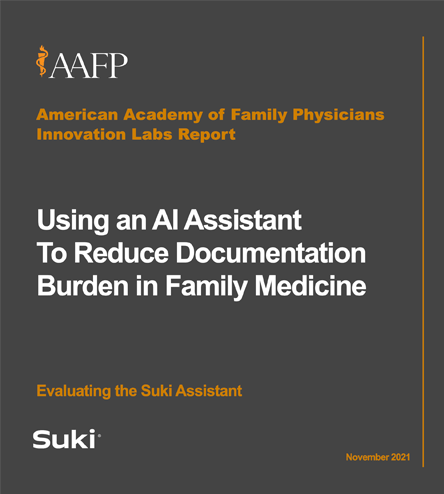Technologies for Reducing Documentation Burden
Technological innovations offer promise in reducing and even eliminating documentation burden. Choosing a medical documentation solution that is right for you is a personal preference, but it’s also about weighing the costs, risks, and time it takes to use daily.
Below are five major technologies to help you reduce clinical documentation burden:
Medical scribes
Virtual scribes
Medical speech recognition
Ambient speech recognition
Artificial intelligence (AI) assistants
$2500–$4500 per month
Medical scribes shadow the physician, document the note, and perform other administrative tasks. Medical scribes are efficient but can be costly for private practices or individual health care professionals. They also are hard to scale and can put physicians at risk of malpractice due to possible function creep.
Pro:
• Delegating documentation and other administrative tasks to an in-person scribe takes burden off the physician
Con:
• Not broadly used in family medicine or primary care due to costs and investment required (pre-med, medical students)
Impact:
• Increased productivity; reduced documentation burden
• 57% increase in patient face time
• 27% decrease in EHR time
$1000–$1200 per month
Virtual scribes and transcriptionists reduce intrusiveness by removing the third party from the exam room, but their usefulness is threatened by costs, note turnaround times, offshore data transmission, and security risks.
Virtual scribe companies >> Augmedix, Aquity, Athreon, ScribeEMR, SkywriterMD
Pro:
• Cheaper than medical scribes and have no retention issues
Cons:
• Performs only patient charting
• Not real-time; up to 24-hour delay
• May incur added hardware costs
Impact:
• Up to 85% burnout reduction
• 1.1 hour/day EHR time reduction
• 1 hour/day documentation reduction
Enterprise: $25–$75 per month
Single physician: $200 per month
Medical speech recognition (MSR) technology allows you to dictate your notes instead of typing. Dictation devices can help improve health outcomes and patient understanding of care plans, but they don’t fully relieve physicians of documentation burden due to the work they require to run at optimum.
Medical speech recognition companies >> Dragon Medical, MModal, KLAS Ranking
Pro:
• Established technology option with greatly improved accuracy
Con:
• Similar to dictation but physician must navigate EHR and edit
Impact:
• 79% of users were satisfied with MSR
• 77% reported improved efficiency
Pro:
• Shows promise in decreasing burden and enhancing care and visit documentation efficiency
Con:
• Ambient discussion in exam room is personal; MDM is purposeful and may not be done in the exam room
Impact:
• 79% of users reported better documentation quality
• 70% saw reduced burnout and fatigue
• 81% of patients saw greater physician focus
$150–$200 per month
AI-powered, voice-enabled digital assistants can help physicians complete documentation and other administrative tasks. Although AI assistants still have room to develop, they are the only documentation solutions on the market that show promise in totally automating the EHR documentation process.
Pros:
• Mobile assistant allows physician to step away from EHR and let assistant interact
• Consumer-friendly features and cost
• Some AI assistants use a "human in the loop" to edit and correct the transcription while the AI assistant learns
Con:
• EHR integration is essential and vendors have been slow to support, but progress is being made
Impact:
• 72% reduction in documentation time
• 40% decrease in after-hours work, including weekend work
• 20% increase in practice satisfaction

Innovation Lab: Using an AI Assistant to Reduce Documentation Burden in Family Medicine
The AAFP launched a series of Innovation Labs to identify and demonstrate innovations essential to optimizing the family medicine experience. The initial phase provided proof that using an AI assistant can significantly reduce documentation burden and family physician burnout. Adoption was assessed based on the number of participants agreeing to buy the solution and the impact realized during the lab trial.
Differences between AI and medical speech recognition
Unlike AI, legacy MSR systems did not leverage deep learning needed to perform voice-to-text conversion or have natural language understanding. Although newer MSR solutions have progressed in these areas, AI assistants better understand natural language and can detect intent (i.e., commands from the user). Whereas voice recognition solutions require the user to specify where dictation should be placed in the EHR note, AI assistants’ built-in model of documentation recognizes embedded commands and knows where to place text. This ability enables the physician to generate a note without having to navigate or edit in the EHR.